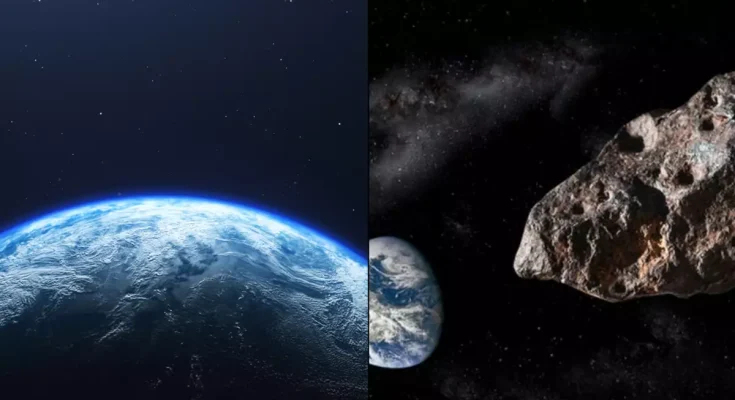There’s a giant asteroid called the ‘God of Chaos’ that could be heading towards Earth and experts worry the odds of it actually hitting us are higher that previously thought.
99942 Apophis is a massive 340-metre-wide asteroid named after the Egyptian god of chaos and destruction, Apophis.
With that in mind, if it struck Earth, the consequences would be pretty devastating.
In fact, it’s thought that the asteroid’s impact would be equivalent to 1,000 megatons of TNT.
Earlier this year, scientists shared that the asteroid is expected to pass us by on 13 April, 2029 – coming within 40,000 kilometres of our planet – but they were confident that there wouldn’t be a collision.
This has since changed.
While Apophis’ current trajectory isn’t set to crash into Earth, a new study – published in The Planetary Science journal – has found that an object as small as two-feet could change this.
Canadian astronomer Paul Wiegert and co-author Benjamin Hyatt looked into the odds of the asteroid colliding with another object causing it to hurtle our way – and it’s not exactly great news.
They found that a relatively small object of around 0.6 metres (two-feet) could be enough to push the asteroid into one of the 2029 ‘keyhole’ trajectories around Earth. This could then lead it to collide with our planet at a later date.
For ‘god of chaos’ to hit Earth in 2029, the object it collided with would have to be around 3.4 metres in size – an object slightly larger than a grand piano.
Fortunately, the odds of this happening in 2029 are ‘exceptionally low’ (around 2.7 percent, to be precise).
 An object as small as two-feet wide could send the ‘god of chaos’ asteroid hurtling towards Earth (Getty Stock Image)
An object as small as two-feet wide could send the ‘god of chaos’ asteroid hurtling towards Earth (Getty Stock Image)
Wiegert explained: “The odds of an unseen small asteroid deflecting Apophis enough to direct it into a collision with Earth in 2029 are approximately 10-8.
“Given that only 5 percent of such impulses are in the correct direction to generate an Earth impact, the overall probability of a small impact directing Apophis into a collision with the Earth is less than one in two billion.”
While this is all good news, he did also issue somewhat of an ominous warning.
“An additional element of the story is that Apophis has been largely unmonitored by telescopes since May 2021 and will remain so through 2027,” Wiegert continued.
“This arises simply because of the relative geometry of Apophis, Earth, and the Sun, which puts the asteroid in the daytime sky for the time span in question.”



